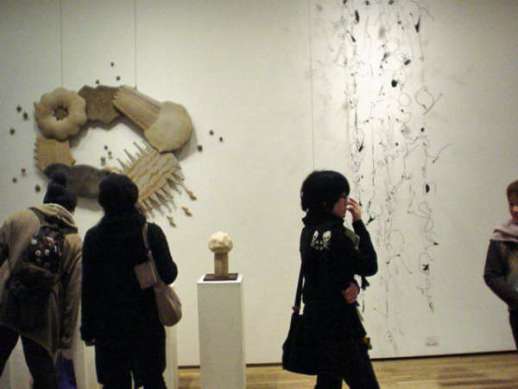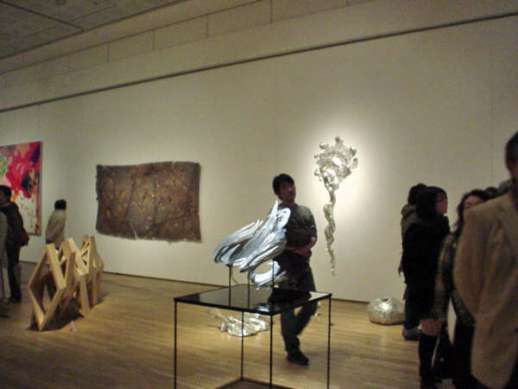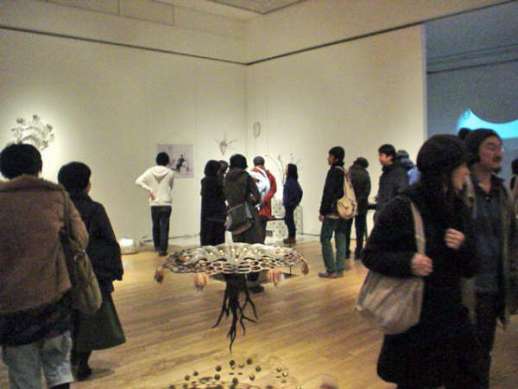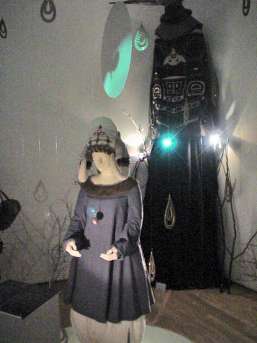Graduation Day
This year’s graduation show at Tokyo’s famed University of the Arts (Tokyo Geijutsu Daigaku, popularly known as Geidai) is hands down the best student art show I have ever seen, and I’ve seen a lot. If you are at all interested in art — especially the more ‘traditional’ forms like painting and sculpture — you absolutely must figure out how to get there this week, during business hours, before the show closes. Yes, it is even worth taking the afternoon off work.
If you only have an hour or two, head straight for the university museum, which is showing student work on all of its floors. Skip the new-media installations and the area devoted to paintings in the Japanese tradition; save your time for the all-star work on levels 3 and B2.

What strikes me most about this show is the staggering variety of styles and methodologies on display. Most university art programs are handicapped by a strong ideological bent: abstract painting is in while realism is out, or sculpture in stone is hopelessly passé. But here, apparently, students are free to pursue whatever their interests might be, and they do so in an incredibly polished and professional manner, with impeccable results that are in most cases both conceptually interesting and aesthetically complete. On the third floor, one artist has warped musical scores into architectural drawings; another sculpted wood into an entwined goddess and dragon that would be at home in an ancient temple of some indeterminate culture; somebody else had the bizarre and fascinating idea of piecing trash together into a word-sculpture that reads “B Nice 2 Nature” when viewed from the front, but resolves itself into either a fish or a bird when viewed from either side.

A major weakness of contemporary Japanese art is the relentless interest in all things kawaii (cute). Takashi Murakami is perhaps Japan’s best-known art export, and he is as guilty of this stylistic pitfall — which he blames on Japan’s postwar emasculation — as anyone. (And Tokyo’s annual Design Festa also unfortunately tends toward the cute.) But at the Geidai show, there’s nary an anime character nor a doll-faced virgin sexpot to be seen. Only one or two pieces could be said to be influenced by kawaii culture — for example, the incredibly detailed narrative painting in which cartoony animals and spirits act out the Kojiki, one of Japan’s seminal texts — but here the cute is used in service to a larger idea instead of as an end in itself.

The B2 level houses the final projects of students in craft and design (as opposed to the ‘fine arts’ of the third floor). This is all three-dimensional work, and whether it is done in melted coins, clay, or inlaid lacquer, it’s all executed at a high level of craftsmanship. Students have used both traditional and new techniques to make a variety of stand-alone pieces as well as installation-style environments.

On your way out of the museum building, stop by the eight-story building housing the oil-painting studios, which is open to the public all week. Go to enjoy the smell of turpentine and the feel of a dirty, functioning art space as much as the artwork, which is displayed in each student’s studio space so that you can be surrounded by one person’s artwork at a time.
For all of these students, despite the economic downturn, the future looks bright. Most of this work would be highly marketable if only it were for sale, but I guess we’ll have to wait until these ingenues find their way into the ‘corporate jobs’ of the art world: partnership with individual galleries.
Jessica Niles DeHoff
Jessica Niles DeHoff



